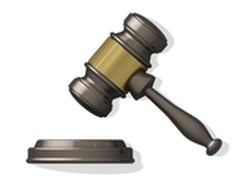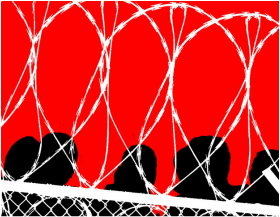Punishment should first and foremost serve the function of protecting society. This can be done by incapacitating those who cannot be rehabilitated, and restoring those who can into productive, beneficial citizens. Restorative justice is built on the belief that a supportive community can transform negative behaviors.
Restorative justice aims to heal victims, offenders, and the community. For victims, this may involve restoring property, healing injuries, and bringing back “a sense of security” (Banks, 2013, p. 128). Victims are involved in the justice process and given a voice; they are encouraged to tell their story and have the offender and/or community respond with empathy. On the other end, offenders are supported and controlled by social management, rather than a punitive, detached system. This means they are given the tools and resources to restore their bonds with the community and make better choices. To accomplish this, the community must stretch beyond stigmatizing criminality and adopt a supportive mentality for the victim and offender. True restorative justice occurs with all three entities: victim, offender, and community.
While restorative justice is not a “punishment” in the traditional sense, the way incapacitation or the death sentence is, it falls under this category because, based on Banks’ descriptions, it 1) involves the community showing disapproval (in that an offender must accept responsibility); 2) allows offenders to make amends for the harm they have caused; and 3) will stop offenders from committing crimes again (2013).
Where does restorative justice fit into the justice system? First, one must acknowledge the role of incapacitation and retribution. Some sociopathic tendencies cannot be treated or amended, the crimes so heinous that there are no solutions but incapacitation and retribution. These forms of punishment are important because there is no other leverage in the criminal justice system for protecting against individuals who sincerely do not care about society, law and order, rehabilitation, or the value of life itself. They feel no remorse, so the punishment should treat them with the same indifference. In other words, retribution is a “fight fire with fire” technique; it is concerned with justice and justice alone. Such is the case with someone like the notorious Ted Bundy, who murdered an estimated forty victims, believed killing was a divine experience, and never admitted remorse. He received the death penalty for his crimes, which, given the number of lives he mercilessly took, was the only fitting punishment that didn't violate the constitution...
In the average case, however, the trouble with judging whether someone is capable of rehabilitation or restoration is that remorse is not always easy to discern, especially not in a court setting. There are conflicting ideas of what constitutes an indicator of “genuine” remorse, which makes such a judgment call so subjective (Zong, 2014).
Aside from the extremes, which do not currently make up the majority of our prison population, punishment should be reparative, designed to amend wrongs and prevent further harms to society. These concepts flourish with restorative justice.
There are also aspects of retribution in restorative justice (Banks, 2013). An offender may be ordered to pay reparations to a victim or victim’s family or complete community service. While some advocates for restorative justice argue that punitive tactics like reparations have no place in this method, reparations can serve as a bridge to healing the damage to the community and victims. It might go toward repairing a broken window, replacing a stolen item, helping to rebuild a burnt house, assist with a victim’s medical bills, and so on. This goes toward allowing offenders to make amends.
Opponents to restorative justice argue that victims might feel the crimes they suffered are taken less seriously than those that result in a prison sentence, and it may suggest that “society has a different attitude toward certain kinds of behavior” (Banks, 2013, p. 129). This is not necessarily so; it might just suggest that certain offenders are easier to work with and “restore.”
Additionally, there is always the possibility that telling their story or having an offender reach out to express remorse (which won't always be part of the arrangement) could trigger victims and cause them to relive trauma. However, restorative justice, when done correctly, is supposed to be on the victim’s terms. An offender is approached first to ensure that he/she will cooperate in apologizing and expressing remorse before asking anything of the victim (Sherman & Strang, 2007).
Another argument in favor of restorative justice is that it produces results; in other words, it stops certain offenders from committing crimes again. Punitive measures may or may not have a deterrent effect. For instance, there is no difference in deterrence for crimes that bring about the death penalty versus life in prison (Banks, 2013). Some criminologists argue that the criminal justice system has a deterrent effect; others state that “the criminal may well fear the law but still break it” and professional criminals do not experience the same shock at getting caught (Banks, 2013, p. 119). To truly prevent future crimes, then, we must employ more than fear. Banks points out a perspective that law-abiding citizens act within the law not out of fear but because of “moral inhibitions and norms of conduct” (p. 119). Restorative justice can aim to change these norms of conduct for an offender. Through proper treatment programs and personal management strategies, as well as a supportive community instituting these norms, an offender’s moral mindset may be influenced. This idea draws upon Sutherland’s theory of differential association, which posits that our interaction with others teaches us values, attitudes, and motives. Furthermore, analysis on restorative justice found that it “substantially reduced repeat offending for some offenders,” reduced post traumatic stress for victims, “reduced crime victims’ desire for violent revenge against their offenders,” reduced recidivism, and lowered criminal justice costs (Sherman & Strang, 2007).
Restorative justice is not flawless. It is a difficult task to engage victim and community, especially if the majority believe in a traditionally punitive approach. The process requires everyone to buy into the belief that interacting with offenders will improve the entire situation; otherwise, cooperation from all three entities will be nearly impossible to achieve.
Furthermore, this process does not require families of offenders to participate, though this support system can be critical for an offender to amend behaviors. Incorporating the family could bring about a much larger success rate. Finally, drawing a line between what to be punitive toward and what to be rehabilitative toward can be problematic; who makes these decisions? Who decides which criminals can be “restored” and which are beyond reach?
Not all convicted criminals are “dangerous or dishonest people.” Restorative justice allows people to rejoin society as better citizens, less likely to commit crimes again. When an offender feels a supportive community around him, and a "light" at the end of the tunnel that says a new path is possible, he will be less likely to want to harm that community.
Banks, C. (2013). Criminal justice ethics: Theory and practice. Thousand Oaks, CA: Sage Publications.
Sherman, Lawrence and Heather Strang. (2007). Restorative Justice: the evidence. The Smith Institute. http://www.iirp.edu/pdf/RJ_full_report.pdf
Zong, Rocksheng, MD., Madelon Maranoski, et. al. (2014). “So You’re Sorry? The Role of Remorse in Criminal Law.” Journal of the American Academy of Psychiatry and the Law 42:1:39-48. http://www.jaapl.org/content/42/1/39.full


 RSS Feed
RSS Feed